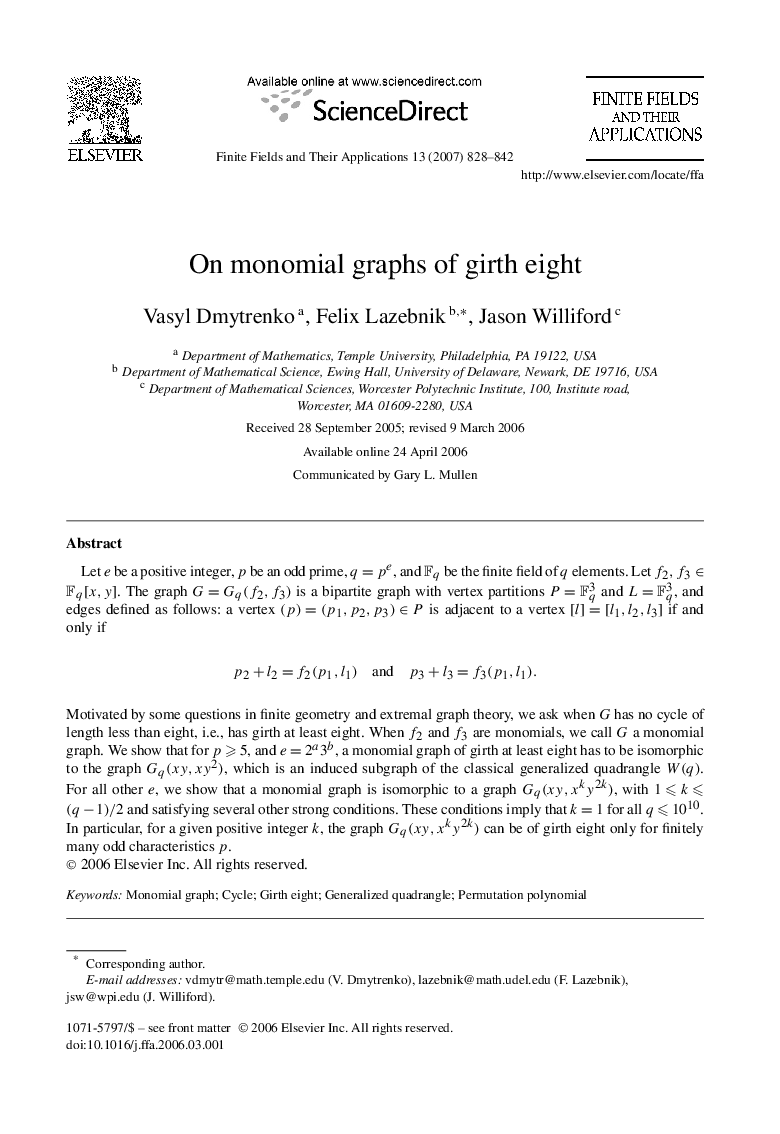| Article ID | Journal | Published Year | Pages | File Type |
|---|---|---|---|---|
| 4583221 | Finite Fields and Their Applications | 2007 | 15 Pages |
Abstract
Let e be a positive integer, p be an odd prime, q=pe, and Fq be the finite field of q elements. Let f2,f3âFq[x,y]. The graph G=Gq(f2,f3) is a bipartite graph with vertex partitions P=Fq3 and L=Fq3, and edges defined as follows: a vertex (p)=(p1,p2,p3)âP is adjacent to a vertex [l]=[l1,l2,l3] if and only ifp2+l2=f2(p1,l1)andp3+l3=f3(p1,l1). Motivated by some questions in finite geometry and extremal graph theory, we ask when G has no cycle of length less than eight, i.e., has girth at least eight. When f2 and f3 are monomials, we call G a monomial graph. We show that for p⩾5, and e=2a3b, a monomial graph of girth at least eight has to be isomorphic to the graph Gq(xy,xy2), which is an induced subgraph of the classical generalized quadrangle W(q). For all other e, we show that a monomial graph is isomorphic to a graph Gq(xy,xky2k), with 1⩽k⩽(qâ1)/2 and satisfying several other strong conditions. These conditions imply that k=1 for all q⩽1010. In particular, for a given positive integer k, the graph Gq(xy,xky2k) can be of girth eight only for finitely many odd characteristics p.
Related Topics
Physical Sciences and Engineering
Mathematics
Algebra and Number Theory
Authors
Vasyl Dmytrenko, Felix Lazebnik, Jason Williford,
